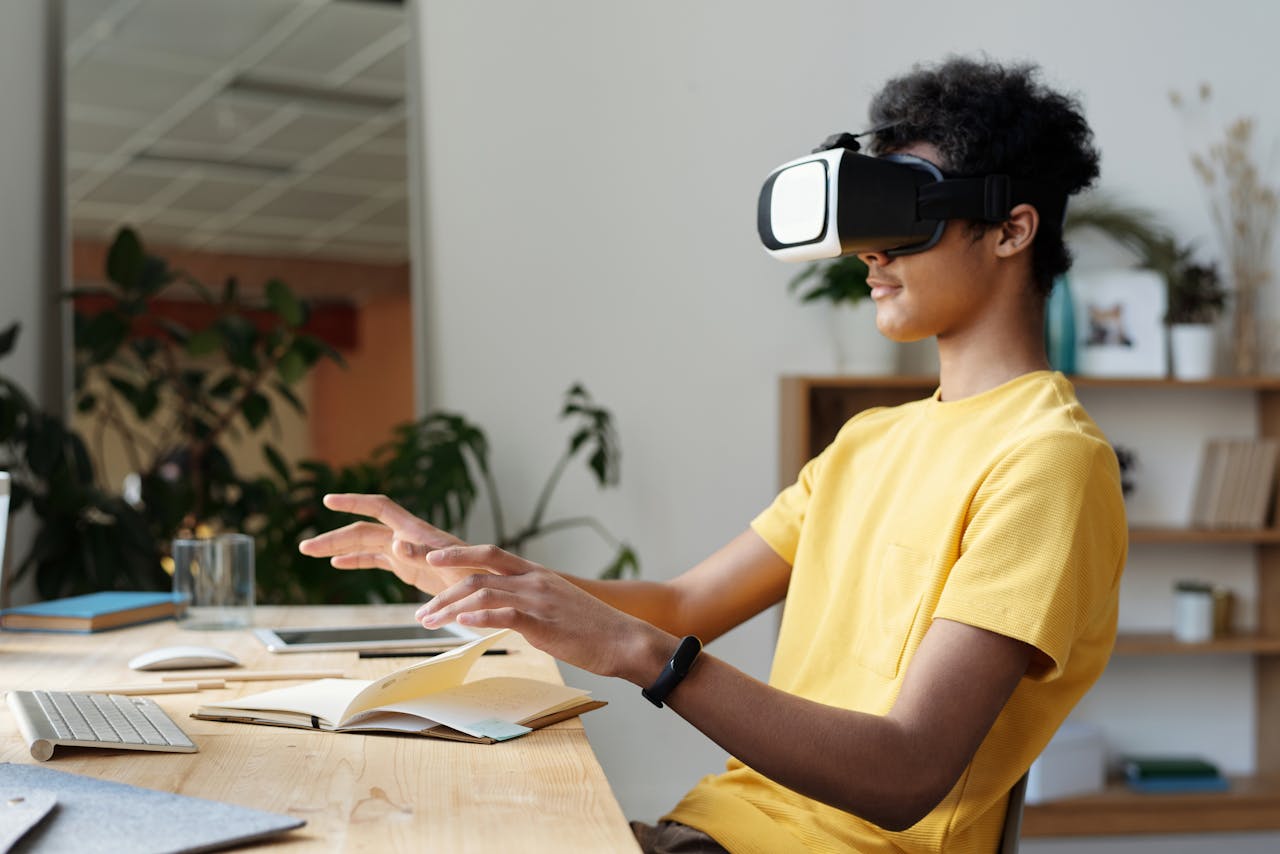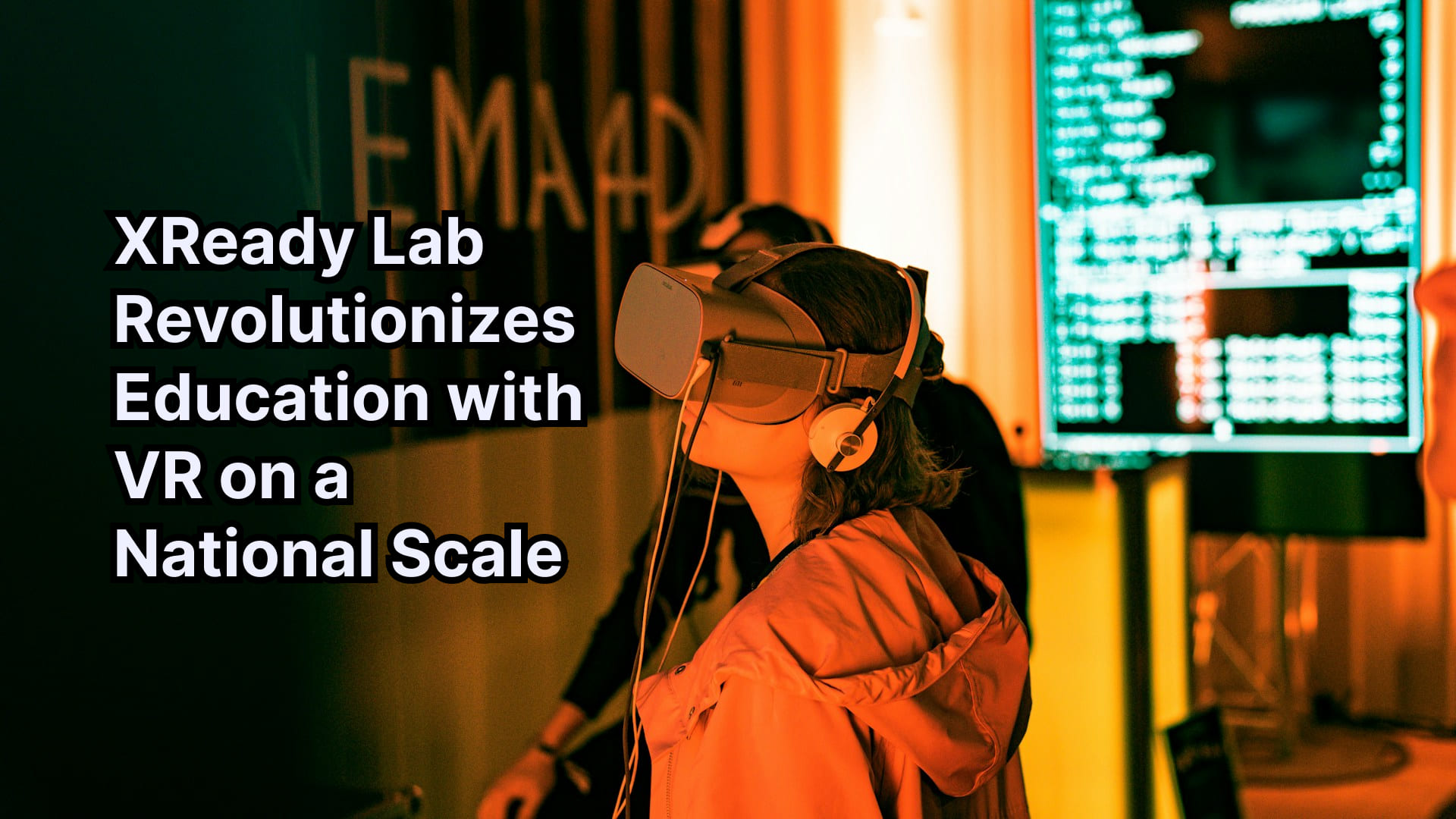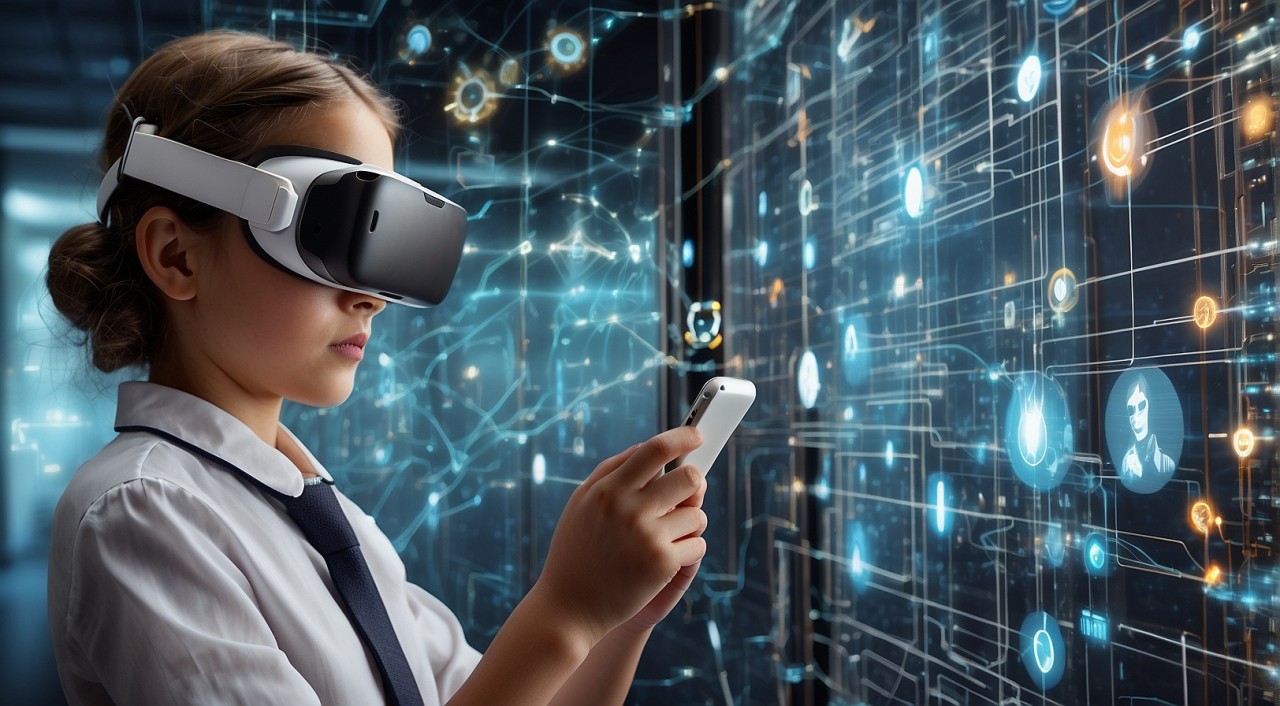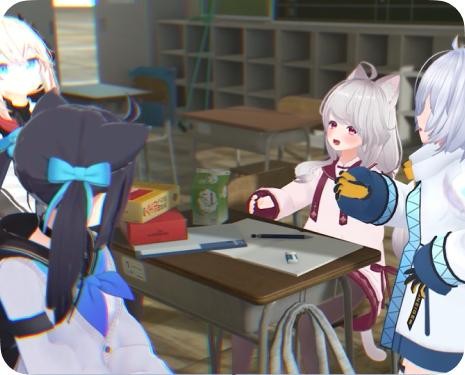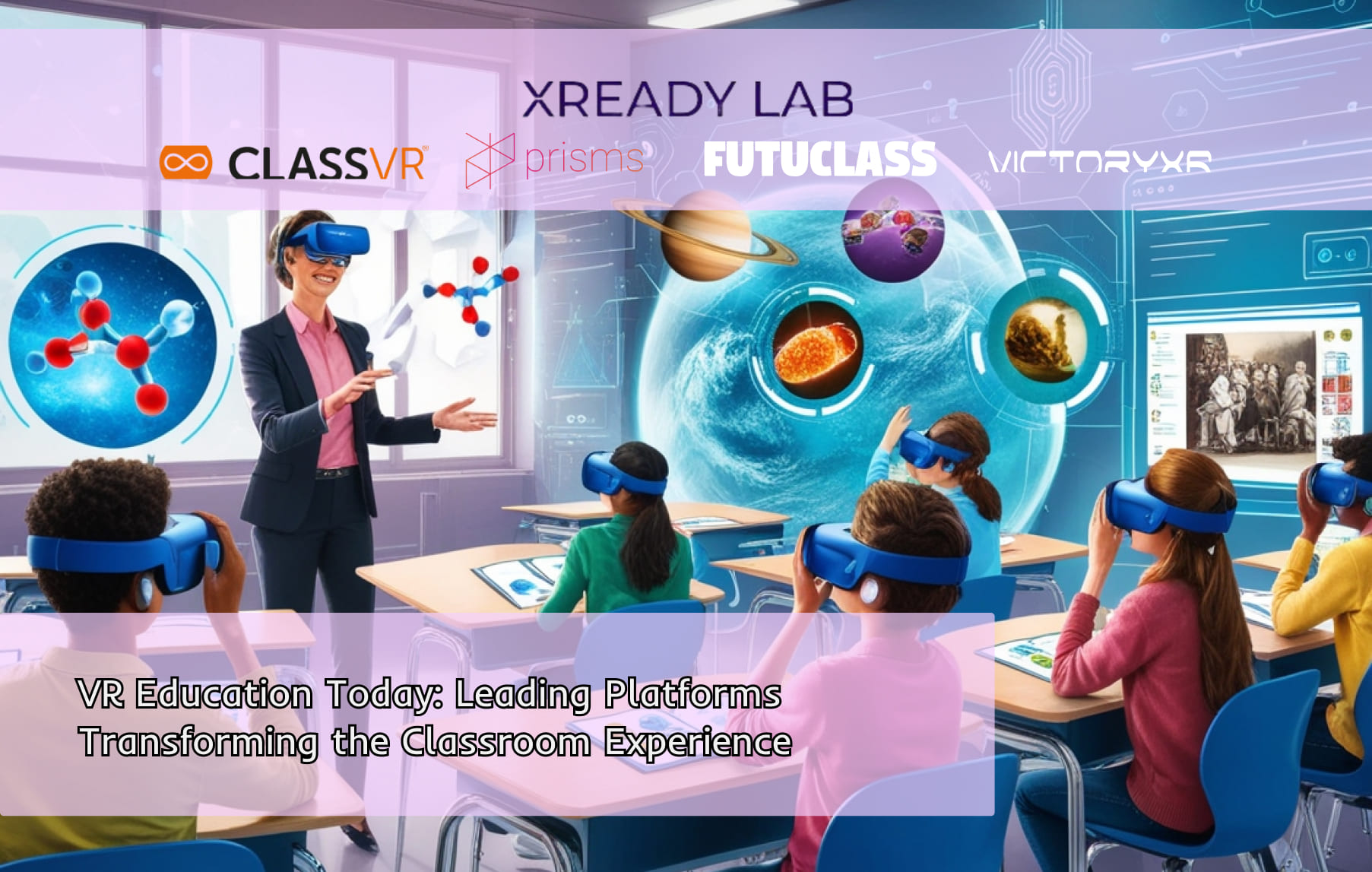
As technology continues to advance, virtual reality (VR) is making a significant impact on education, offering immersive experiences that enhance learning across various subjects. Schools worldwide are embracing VR education to create dynamic, interactive lessons that engage students like never before. From exploring the depths of the ocean in a science class to stepping inside a historical event in social studies, virtual reality in education is reshaping the way students interact with the curriculum.
The Rise of Virtual Reality in the Classroom
The integration of VR in the classroom brings abstract concepts to life, particularly in STEM fields where complex theories can be difficult to grasp through traditional teaching methods. By providing a virtual reality classroom, educators can offer hands-on experiences without the limitations of physical resources or safety concerns. This technology not only increases student engagement but also deepens understanding by allowing learners to explore and interact with content in a three-dimensional space.
Benefits of VR Education
Enhanced Engagement: Interactive simulations and immersive environments capture students' attention, making learning more enjoyable.
Improved Understanding: Complex concepts become more accessible when students can visualize and manipulate them in a virtual space.
Equal Opportunities: VR provides all students with access to experiences that might otherwise be unavailable due to geographical or economic constraints.
Safe Learning Environment: Risky experiments or explorations can be conducted safely within a virtual setting.
Leading VR Education Platforms
Several companies are at the forefront of integrating VR into education, each offering unique approaches to enhance the learning experience. Let's explore some of these leading platforms and how they are transforming classrooms.
ClassVR
ClassVR is known for its comprehensive VR education platform, offering an extensive library of immersive content that spans various subjects. Their solution is designed to be easily integrated into the classroom, providing teachers with a user-friendly interface and a wealth of resources.
Highlights:
Wide Content Library: Offers a broad range of 360-degree videos and interactive experiences.
Ease of Use: The platform is designed for quick setup, allowing teachers to incorporate VR into lessons without technical hurdles.
Learning Management System (LMS) Integration: Seamlessly works with existing LMS platforms, facilitating lesson planning and student assessment.
Considerations:
Interactivity Limitations: While the content is immersive, some experiences rely heavily on passive viewing rather than interactive engagement.
Target Audience: Primarily geared towards younger students, which may limit its applicability for higher grade levels.
XReady Lab
https://youtu.be/6AHexIpX2DI
XReady Lab focuses on delivering a robust, curriculum-aligned VR platform specializing in STEM education. Their extensive content library covers physics, chemistry, and biology, providing interactive modules that align with educational standards.
Highlights:
Comprehensive STEM Content: Offers a wide range of modules that delve deep into scientific concepts.
Curriculum Alignment: Designed to fit seamlessly with existing lesson plans and educational requirements.
Interactive Simulations: Provides hands-on experiences that promote critical thinking and problem-solving skills.
Considerations:
Single-User Experience: Currently lacks multiplayer functionality, which may limit collaborative learning opportunities.
Focus Area: Specializes in STEM, so schools seeking content in other subjects may need additional resources.
Try XReady Lab for Free: Request a Demo
Prisms VR
https://youtu.be/fVmVfNqoDPI
Prisms VR focuses on making complex mathematical concepts more accessible through interactive, real-world problem-solving scenarios. Their platform emphasizes experiential learning, allowing students to apply mathematical theories in practical situations.
Highlights:
Interactive Learning: Engages students with hands-on activities that reinforce mathematical concepts.
Teacher Support: Provides training and resources to help educators effectively implement VR in their teaching.
Real-World Applications: Links abstract math concepts to real-life problems, enhancing relevance and understanding.
Considerations:
Content Scope: Currently offers a limited range of subjects, primarily focusing on mathematics.
Integration Challenges: May require additional effort to align with specific curriculum standards or LMS platforms.
Futuclass
https://youtu.be/kCHbogKLmgw
Futuclass offers a gamified approach to learning, particularly excelling in science subjects like chemistry and physics. Their VR experiences are designed to make complex scientific principles more engaging and understandable through interactive gameplay.
Highlights:
Gamification: Transforms learning into an exciting game-like experience, increasing student motivation.
Science Focus: Provides in-depth modules on chemistry and physics, making difficult concepts accessible.
Interactive Experiments: Allows students to conduct virtual experiments safely, fostering hands-on learning.
Considerations:
Content Depth: While strong in certain areas, the platform may lack comprehensive coverage across all STEM subjects.
Curriculum Alignment: Educators may need to adapt content to fit their specific educational standards.
VictoryXR
https://youtu.be/jFeIPcVGqbc
VictoryXR stands out by offering collaborative virtual environments where students and teachers can interact in real-time. Their platform emphasizes social learning, enabling virtual field trips and group activities that mimic the dynamics of a physical classroom.
Highlights:
Multiplayer Functionality: Supports real-time interaction between students and educators within the VR space.
Virtual Field Trips: Provides immersive experiences to locations around the world, enhancing cultural and historical education.
Interactive Learning: Encourages collaboration and communication among students.
Considerations:
Content Modernity: Some content may feel outdated compared to newer VR experiences.
Engagement Levels: Lacks some gamified elements that today’s students find engaging, potentially impacting sustained interest.
The Future of VR in Education
The landscape of virtual reality in education is rapidly evolving, with companies continually innovating to enhance learning experiences. As technology advances, we can expect:
Expanded Content Libraries: More subjects and topics will become available, providing comprehensive resources across the curriculum.
Enhanced Interactivity: Increased focus on gamification and interactive elements to maintain student engagement.
Improved Accessibility: Advancements in technology will make VR more affordable and accessible to schools worldwide.
Collaborative Learning: Development of multiplayer functionalities to support social learning and teamwork within virtual environments.
Conclusion
Virtual reality is poised to revolutionize education by offering immersive, interactive experiences that traditional teaching methods cannot match. Platforms like XReady Lab, Prisms VR, Futuclass, ClassVR, and VictoryXR are leading the way, each bringing unique strengths to the table.
As educators consider integrating VR learning into their classrooms, it's essential to evaluate each platform's offerings in relation to their specific educational goals and student needs. Balancing content quality, curriculum alignment, interactivity, and ease of integration will be key to successfully harnessing the benefits of virtual reality in the classroom.
Experience the future of education with XReady Lab's VR solutions. Bring your lessons to life and inspire your students with immersive learning.
Request your free demo today!

